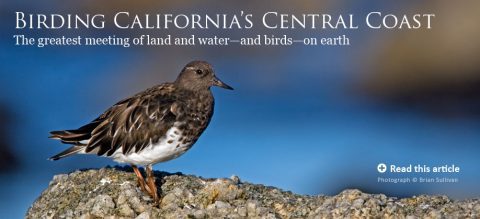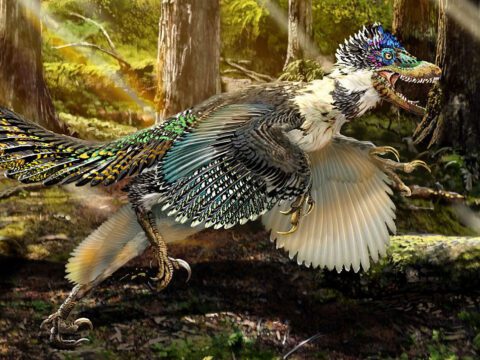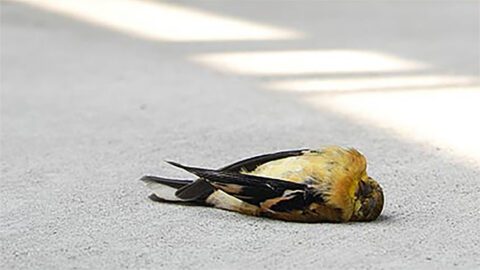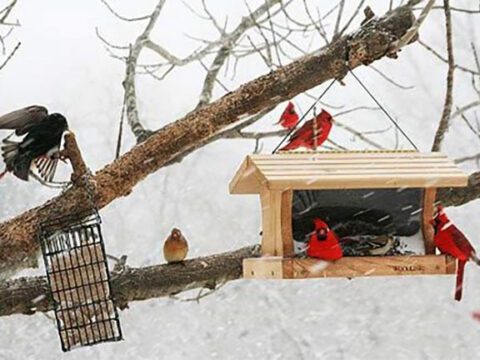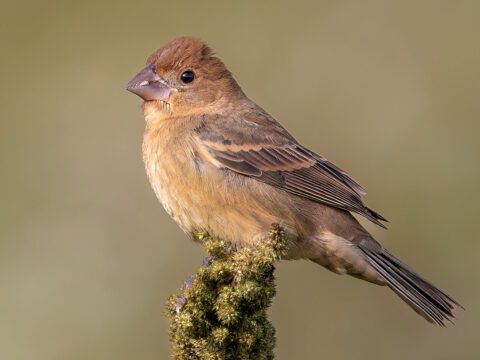Bosque Del Apache, New Mexico: A Bird Photographer’s Playground
Text and photos by Marie Read July 15, 2008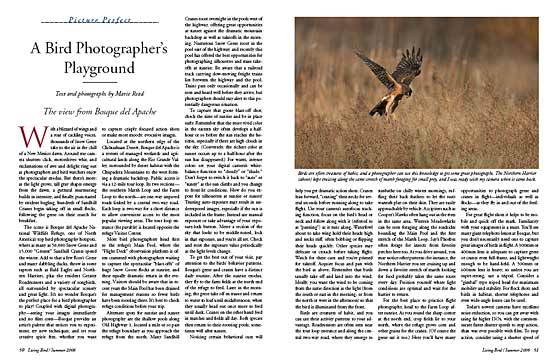
With a blizzard of wings and a roar of cackling voices, thousands of Snow Geese take to the air in the chill of a New Mexico dawn. Around me camera shutters click, motordrives whir, and exclamations of awe and delight ring out as photographers and bird watchers enjoy the spectacular exodus. But there’s more: as the light grows, tall gray shapes emerge from the dawn, a guttural murmuring builds in intensity, and finally, punctuated by strident bugling, hundreds of Sandhill Cranes begin taking off in small flocks, following the geese on their search for breakfast.
The scene is Bosque del Apache National Wildlife Refuge, one of North America’s top bird-photography hotspots, where as many as 50,000 Snow Geese and 15,000 “Greater” Sandhill Cranes spend the winter. Add to that a few Ross’s Geese and many dabbling ducks, throw in some raptors such as Bald Eagles and Northern Harriers, plus the resident Greater Roadrunners and a variety of songbirds, all surrounded by spectacular scenery and great light. It’s no wonder Bosque’s the perfect place for a bird photographer to play! Coupled with digital photography—seeing your images immediately and no film costs—Bosque provides an artist’s palette that entices you to experiment, try new techniques, and set your creative spirit free, whether you want to capture crisply focused action shots or make more moody, evocative images.
Located at the northern edge of the Chihuahuan Desert, Bosque del Apache is a system of managed wetlands and agricultural lands along the Rio Grande Valley, surrounded by desert habitat with the Chupadera Mountains to the west forming a dramatic backdrop. Public access is via a 12-mile tour loop. Its two sections—the southern Marsh Loop and the Farm Loop to the north—are one-way unpaved roads linked by a central two-way road. Each loop is two-way for a short distance to allow convenient access to the most popular viewing areas. The tour loop entrance (fee payable) is located opposite the refuge Visitor Center.
Most bird photographers head first to the refuge’s Main Pool, where the “Flight Deck” observation platform is often crammed with photographers waiting to capture the spectacular “blast-offs” of huge Snow Goose flocks at sunrise, and their equally dramatic return in the evening. Visitors should be aware that in recent years the Main Pool has been drained for management reasons so fewer birds have been roosting there. It’s best to check refuge conditions before your trip.
Alternate spots for sunrise and sunset photography are the shallow pools along Old Highway 1, located a mile or so past the refuge boundary as you approach the refuge from the north. Many Sandhill Cranes roost overnight in the pools west of the highway, offering great opportunities at sunset against the dramatic mountain backdrop as well as takeoffs in the morning. Numerous Snow Geese roost in the pool east of the highway, and recently this pool has offered the best opportunities for photographing silhouettes and mass takeoffs at sunrise. Be aware that a railroad track carrying slow-moving freight trains lies between the highway and the pool. Trains pass only occasionally and can be seen and heard well before they arrive, but photographers should stay alert to this potentially dangerous situation.
To capture that goose blast-off shot, check the time of sunrise and be in place early. Remember that the most vivid color in the eastern sky often develops a half-hour or so before the sun reaches the horizon, especially if there are high clouds in the sky. (Conversely, the richest color at sunset occurs up to a half-hour after the sun has disappeared.) For warm, intense colors set your digital camera’s white-balance function to “cloudy” or “shade.” Don’t forget to switch it back to “auto” or “sunny” as the sun climbs and you change to front-lit conditions. How do you expose for silhouettes at sunrise or sunset? Trusting auto-exposure may result in underexposed images, especially if the sun is included in the frame. Instead use manual exposure or take advantage of your exposure-lock button. Meter a section of the sky that looks to be middle-toned, lock in that exposure, and you’re all set. Check and reset the exposure value periodically as the light levels change.
To get the best out of your visit, pay attention to the birds’ behavior patterns. Bosque’s geese and cranes have a distinct daily routine. After the sunrise exodus, they fly to the farm fields at the north end of the refuge to feed. Later in the morning, the geese take off en masse and return to water to loaf until midafternoon, when they usually head out once more to feed until dusk. Cranes on the other hand feed in marshes and fields all day. Both species then return to their roosting pools, sometimes well after sunset.
Noticing certain behavioral cues will help you get dramatic action shots. Cranes lean forward, “craning” their necks for several seconds before running along to take flight. Use your camera’s autofocus tracking function, focus on the bird’s head or neck and follow along with it (referred to as “panning”) as it runs along. Waterfowl about to take wing hold their heads high and necks stiff, often bobbing or flipping their heads quickly. Other species may defecate or crouch before taking flight. Watch for these cues and you’re primed for takeoff. Acquire focus and pan with the bird as above. Remember that birds usually take off and land into the wind. Ideally, you want the wind to be coming from the same direction as the light (from the south or east in the morning, or from the north or west in the afternoon) so that the bird is illuminated from the front.
Birds are creatures of habit, and you can use their activity patterns to your advantage. Roadrunners are often seen near the tour loop entrance and along the central two-way road, where they emerge to sunbathe on chilly winter mornings, ruffling their back feathers to let the sun’s warmth play on their skin. They are easily approachable by vehicle. Accipiters such as Cooper’s Hawks often hang out in the trees in the same area. Western Meadowlarks can be seen foraging along the roadsides bounding the Main Pool and the first stretch of the Marsh Loop. Say’s Phoebes often forage for insects from favorite perches here too. As you drive around, you may notice other patterns; for instance, the Northern Harrier you see cruising up and down a favorite stretch of marsh looking for food probably takes the same route every day. Position yourself where light conditions are optimal and wait for the harrier to return.
For the best place to practice flight photography, head to the Farm Loop after sunrise. As you round the sharp corner at the north end, crop fields lie to your north, where the refuge grows corn and other grains for the cranes. (Of course the geese eat it too.) Here you’ll have many opportunities to photograph geese and cranes in flight—individuals as well as flocks—as they fly in and out of the feeding areas.
For great flight shots it helps to be mobile and quick off the mark. Familiarity with your equipment is a must. You’ll see many giant telephoto lenses at Bosque, but you don’t necessarily need one to capture great images of birds in flight. A 300mm or 400mm lens is adequate to capture geese or cranes even full-frame, and lightweight enough to be hand-held. A 500mm or 600mm lens is heavy, so unless you are super-strong, use a tripod. Consider a “gimbal” type tripod head for maximum mobility and stability. For flock shots and birds in habitat, shorter telephotos and even wide-angle lenses can be used.
Today’s newest cameras have excellent noise-reduction, so you can get away with using far higher ISOs, with the commensurate faster shutter speeds to stop action, than was ever possible with film. To stop action, consider using a shutter speed of at least 1/500 of a second. Using shutter speeds of 1/2,000 of a second and faster, you’ll be able to capture high-action sequences and render even fast-moving wings sharply focused. Select your camera’s central autofocus point, pick a bird flying at some distance and acquire focus, using the focus-tracking function to keep the bird focused as you pan with it. When the bird is composed to your preference, begin firing off shots while panning smoothly until it has flown out of range.
At Bosque, a flying bird is likely to pass across backgrounds of different colors—from the blue New Mexico sky to the vivid yellow and gold cottonwoods gracing the refuge in late autumn. These changing backgrounds may fool even the most sophisticated camera meters, meaning that if you rely on auto-exposure your bird may be incorrectly exposed. Instead use manual exposure—meter a neutral-toned area lying in the same light as your subject, such as grass or a dirt bank, and lock in that exposure value. Mid-toned birds such as cranes and blue-morph geese then will be perfectly exposed wherever they fly. For white-morph geese, you’ll want to underexpose 2/3 stop from the ambient exposure to keep detail in the whites.
Bosque is known for its great light, but occasionally a day goes gray on you. Now it’s time to get creative! Instead of racking up the ISO and struggling to get sharp flight shots, try rendering flying birds intentionally blurred by using a slow shutter speed. For slow-moving birds such as cranes, a shutter speed of 1/8 to 1/30 second can result in some interesting effects. Faster-moving birds, such as flying ducks or blackbird flocks, need a faster speed (1/60 to 1/125 second, for instance), otherwise the bird or birds will be so blurred as to be unrecognizable. Go wild and enjoy the beautiful abstract shapes that birds take on as a result of using this technique. Have fun with color, too. On gray days there’s a lot of blue light reflected from the sky, and images come out cool in color. You can warm them up with your “cloudy” white balance, but why not experiment by setting your white balance on “tungsten” for an intensely blue, otherworldly look?
Try lenses of various focal lengths. Bosque offers opportunities to use everything from ultra-wide angles to super- telephotos. Can you include some of the great scenery in your shot? How about using a wide-angle lens or a short telephoto to include a spectacular sky, leaving the bird or birds rather small in the frame? My arsenal includes 28-105mm, 70-200mm, 300mm, 400mm, and 500mm lenses.
When is the best time to visit Bosque del Apache? Fall and winter offer the highest bird numbers. Mid-November can be lovely with cottonwood trees aglow in gold and mild weather, but there are fewer cranes. Later in November, when Bosque’s famed “Festival of the Cranes” takes place, crane numbers increase. In past years, refuge managers have cut corn in fields close to the refuge roads during the festival, allowing close-up views of the birds and awesome photographic opportunities. December and January can also be good, although the weather can be bitterly cold, especially in early morning. On the other hand, in cold weather, cranes and geese often linger in roost pools until after sunrise and tend to return to roost earlier in the evening. In February, most of the close corn has been eaten so cranes feed farther away from the road, and the easy photo-ops are no more. By late February most cranes and geese have started their journey north.
If you’re dreaming of a fall or winter getaway for bird photography, head to Bosque del Apache. And get ready to play!

All About Birds
is a free resource
Available for everyone,
funded by donors like you
American Kestrel by Blair Dudeck / Macaulay Library
